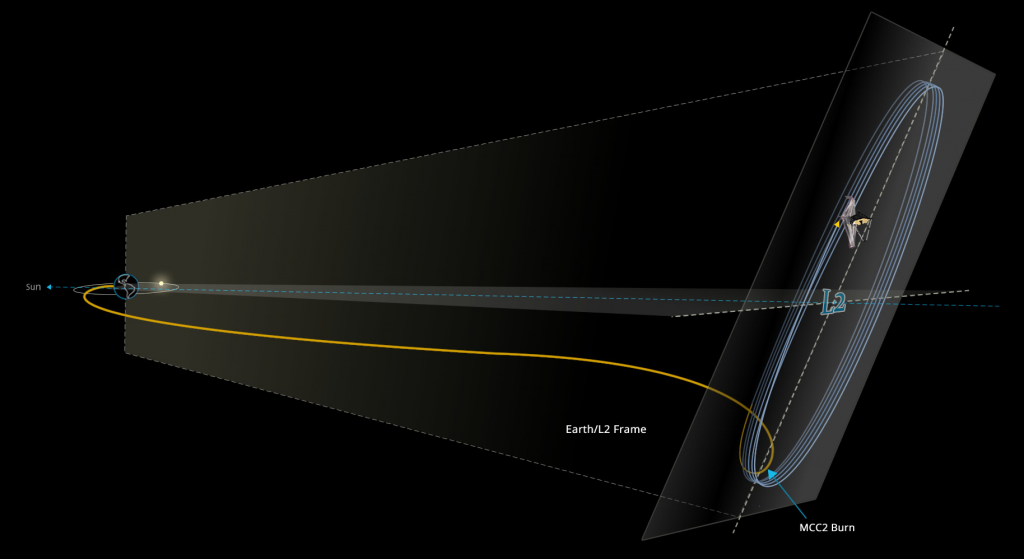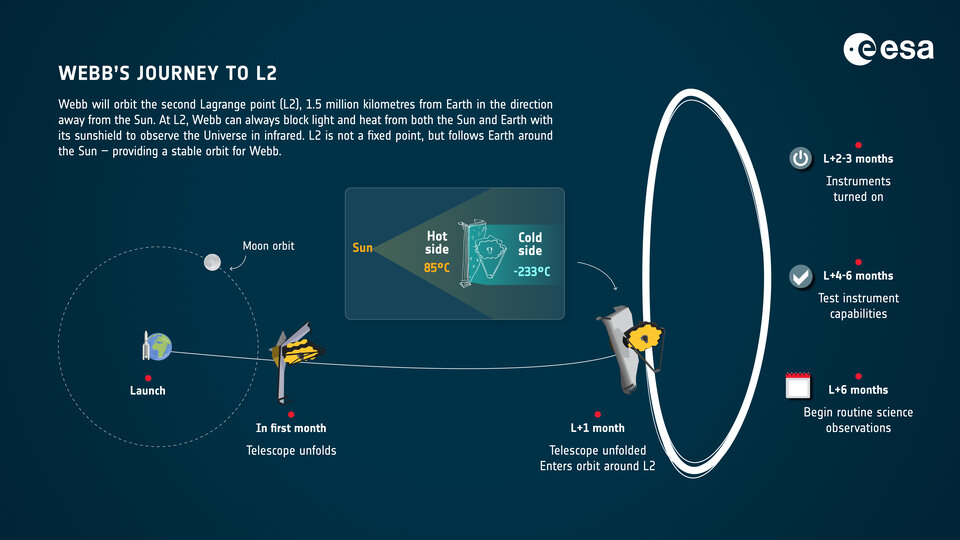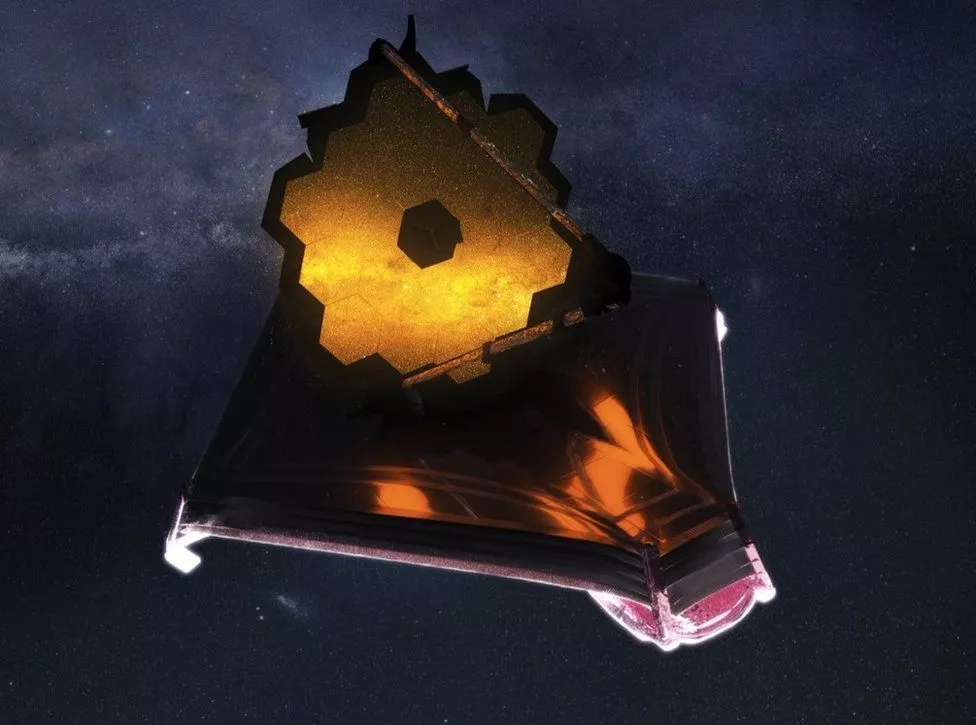NASA’s alleged time machine the James Webb space telescope is at its final destination, reaches its final orbit in space. It covered a distance of approx a million miles from the Earth to reach the L2 point from where almost half of the known universe will fall under its field of view.
Ever since its launch on 25th December, the JWST has been completing several milestones in its deployment as per the plan. This month-long journey of the James Webb telescope placed it at Lagrange 2, one of five unique gravitational spots in space located around the Sun and Earth. This place allows satellites to remain in the same position, thus reducing fuel consumption.
According to NASA, a short, five-minute thruster burn pushed the telescope to its final orbit in space. On December 25, NASA launched the telescope from French Guiana aboard an Ariane-5 rocket. The Webb traveled 1,500,000 kilometers in almost 30 days to reach the parking spot on January 24.
“Webb, welcome home!” said NASA Administrator Bill Nelson. “Congratulations to the team for all of their hard work ensuring Webb’s safe arrival at L2 today. We’re one step closer to uncovering the mysteries of the universe. And I can’t wait to see Webb’s first new views of the universe this summer!”
Space agencies like ESA and CSA along with NASA worked for almost more than a decade to make this dream project a reality. The powerful space telescope JWST is built with a price tag of a whopping $10 billion (Rs 75,000 crores). The arrival ended a month-long journey for the highly anticipated observatory, but there are still a lot of boxes to tick before Webb gets down to business.
Webb’s team will now fine-tune the telescope to further conduct space observations in the coming months. “We are now on the verge of aligning the mirrors, instrument activation and commissioning, and the start of wondrous and astonishing discoveries,” said Bill Ochs, Webb project manager at NASA’s Goddard Space Flight Centre, in a statement.

The James Webb telescope is on a winning streak. A product of decades of work and research, the already-iconic telescope will reveal secrets of deep universe, going back in time to hopefully show us processes that created the universe.
As JWST reached the L2 point, lets talk about what makes this orbit so special. The Earth-Sun lagrange 2 is the point in space where the gravity and centripetal forces of the Sun and the Earth balances each other, allowing objects to remain in a relatively “stable” position. At this orbit satellites can hold their position with few adjustments, decreasing the fuel consumption.
It’s an ideal location for an infra-red space observatory like JWST, because here the sun, Earth and even the moon are always on one side of space. This way the Webb’s instruments and optics will always stay shaded. It’s important to keep the instruments cool for infrared sensitivity.

The track of L2 is fairly wide therefore observatory can’t stay on that trajectory forever without some help. L2 is what’s known as “pseudo” stable, meaning objects that orbit this location will have a tendency to drift away in one direction. “It’s like sitting on a saddle of a horse,” Pinaud says. “On a saddle of a horse, you’re kind of stable. Imagine yourself as being a marble… from head to tail, you’ll probably roll down to the center, but then once you go to either side of the saddle, you’re just gonna fall to the ground.”
So JWST will have to make small adjustments to its path over its lifetime. Every 20 days or so, the telescope will fire its thrusters for two to three minutes at a time to ensure that it stays on track in its orbit. Ultimately, these adjustments will determine how long JWST can stay active in space. When the propellant runs out in the next 10 to 20 years, that’s when the observatory’s mission will end.
Recently JWST finishes unfolding its sunshield and primary mirror, concluding major step in its deployment process that took place over the span of two weeks.JWST observes infrared light, a type of invisible light that is associated with heat. Because of this, the telescope must remain extremely cold in order to properly function, operating at roughly -370 degrees Fahrenheit. The sunshield, comprised of five thin reflective layers of a material called Kapton, is designed to prevent the Sun’s heat from cooking the telescope too much.
:no_upscale()/cdn.vox-cdn.com/uploads/chorus_asset/file/23144281/51412123217_ba966ac1c2_o__2_.png)
The fate of the mission hung in the balance of James Webb’s successful deployment, for if things turned out wrong, the mission would have had to be abandoned. Unlike any other space observatory, JWST is not serviceable and even a single wrong step will lead to a loss of billions of dollars.
There’s still a lot of work remaining for the James Webb telescope to start getting into action. As it reaches L2, the team will start working on aligning the 18 hexagonal mirror segments of the telescope’s primary mirror. This alignment is expected to take months to complete, after which the telescope will be ready to produce the first set of images this summer.

Leave a Reply
You must be logged in to post a comment.